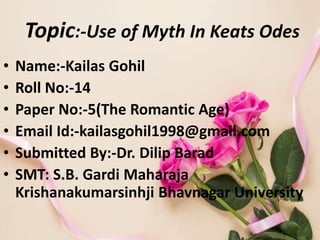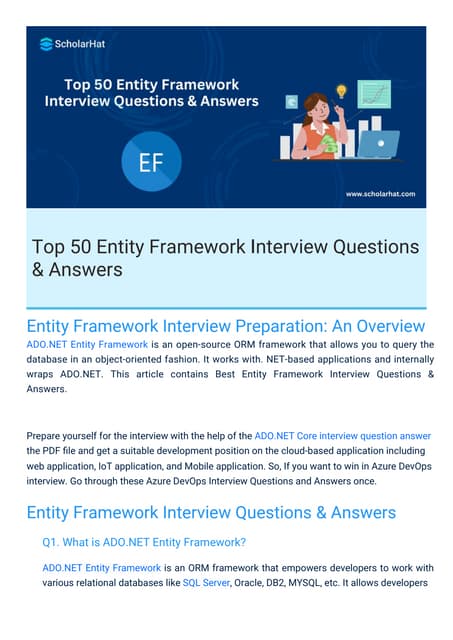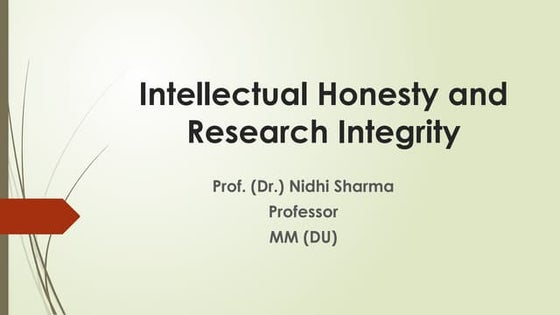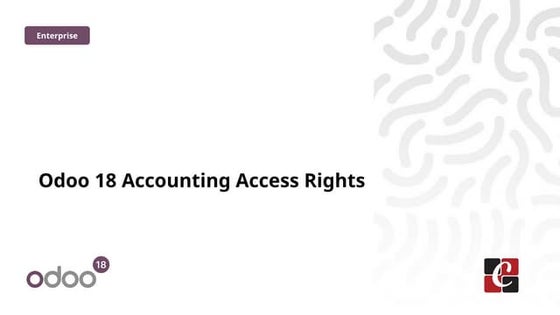Paper 5
Download as PPTX, PDF0 likes60 views
The document discusses John Keats' use of myth in his odes. It provides context on Keats and summaries some of his major odes, including Ode to a Nightingale and Ode to Grecian Urn. It then defines myth and discusses the specific myths referenced in Keats' odes, such as the myth of the dryad referenced in Ode to a Nightingale and the myth of Psyche referenced in the ode of the same name. The document was submitted by Kailas Gohil for a class on the Romantic Age taught by Dr. Dilip Barad at SMT: S.B. Gardi Maharaja Krishanakumarsinhji Bhav
1 of 7
Download to read offline







Recommended
Traditional Literature



Traditional Literatureleasc
Ã˝
This document is a PowerPoint presentation that defines and provides examples of myths, folk tales, fables, and fairy tales. It defines myths as stories involving gods and superhuman beings that explain the world. Examples given are Baucis and Philemon and Medusa's Head. Folk tales are defined as stories passed down orally with no known author, and examples include The Nightingale and Ali Baba. Fables are brief stories that teach a moral lesson, such as The Crow and the Jar. Fairy tales take place in an imaginary world and examples provided are Cinderella and Snow White.Traditional Literature 



Traditional Literature leasc
Ã˝
This document is a PowerPoint presentation that defines and provides examples of myths, folk tales, fables, and fairy tales. It defines myths as stories involving gods and superhuman beings that explain the world. Examples of myths given are Baucis and Philemon and Medusa's Head. Folk tales are defined as stories passed down orally with no known author, and examples include The Nightingale and Ali Baba and the Forty Thieves. Fables are brief stories that teach a moral lesson, such as The Crow and the Jar. Fairy tales take place in an imaginary world and feature magic, like Cinderella and Snow White.The dragon’s pearl



The dragon’s pearlsimge Ada
Ã˝
The document summarizes the key elements of folk tales and provides context about the story "The Dragon's Pearl". It explains that folk tales usually involve ordinary people solving everyday problems, often with magic playing a key role. Additionally, it provides cultural context about dragons in Chinese folk tales, noting they are water gods who bring rain and reward or punish people.What is myth?



What is myth?Devikaba Gohil
Ã˝
This document discusses the definition of myths and provides several examples of myths from Greek and Hindu traditions. Myths are stories that may or may not be true and express visions of the human situation. The document outlines myths about Orpheus and his attempt to retrieve his wife Eurydice from the underworld using his powerful music. It also discusses the Greek goddess Demeter who presided over grains and the cycle of life and death, and her daughter Persephone who was abducted by Hades. In Hindu tradition, it summarizes the myth of Rama, the seventh avatar of Vishnu and protagonist of the Ramayana, who fought Ravana to save his wife Sita. The document notes myths are sometimes followed dueTrabajo de ingles de la u



Trabajo de ingles de la uarmandosanti22
Ã˝
This document contains short phrases that seem to be proverbs or sayings. It discusses not looking a gift horse in the mouth, a friend in need being important, not putting things off until tomorrow, the early bird getting the worm, and where there is a will there is a way.P g texts



P g textsdrashtimehtab01011993
Ã˝
This document provides summaries of various novels across different literary periods and genres. It discusses neoclassical novels like Gulliver's Travels and Robinson Crusoe, romantic novels such as Frankenstein and Sense and Sensibility, Victorian novels like Oliver Twist and Middlemarch, and more modern works from authors like Chetan Bhagat, J.K. Rowling, Arvind Adiga, and Dan Brown. For each novel or author, it lists some of the major themes, topics, and elements discussed in 2-3 sentences. The document aims to concisely summarize a wide range of novels and literary works.myth in ode to nightingale



myth in ode to nightingaleGopi Pipavat
Ã˝
This document provides an analysis of the myths referenced in John Keats's poem "Ode to a Nightingale". It discusses the Greek myths of Philomela, Dryads, Hippocrene, and Bacchus that influenced the poem. The myth of Philomela tells the story of a woman who was raped and transformed into a nightingale. Keats draws comparisons between the immortal world of the nightingale and the mortal world in the poem. The nightingale also represents the free spirit of wood-nymphs from the Dryad myth.Myths in the waste l and



Myths in the waste l andankimakwana
Ã˝
This document discusses various myths referenced in T.S. Eliot's poem "The Waste Land". It defines myth and explains that myths in the poem include Tiresias, the Grail Legend, the Fisher King, the Sibyl, and myths of vegetation and fertility. These myths symbolize themes of decay, spiritual sterility, life-death-rebirth cycles, and provide mythical context for the poem. The document analyzes each myth's meaning and role in Greek mythology or medieval legends that influenced Eliot's work.Trends of Radio for the Today and Future



Trends of Radio for the Today and FutureGohilkailasBhopabhai
Ã˝
This document discusses trends in radio broadcasting, both currently and for the future. It outlines Randy Lane's belief that radio will survive due to the power of personalities. Current trends impacting radio include developing talent, emphasizing local content, visualizing shows, repurposing content, focusing on female audiences, and reducing commercials. Future trends will involve gathering more listener data, demands for digital accountability from local advertisers, targeted advertising, and digital agencies recognizing radio's value.Role of Memory The Sense of an Ending



Role of Memory The Sense of an EndingGohilkailasBhopabhai
Ã˝
This document provides background information on Julian Barnes and summarizes key events and themes in his novel The Sense of an Ending. It discusses Barnes winning the Man Booker Prize for this novel. It then summarizes several major plot points in the novel, including the protagonist Tony's school days, his affair with Veronica, her marriage, and the deaths of two of his friends which come to light later in life through letters. The document examines how memory and one's sense of history can differ from reality.A Grain of Wheat Character and Theme



A Grain of Wheat Character and ThemeGohilkailasBhopabhai
Ã˝
This document provides character summaries and themes for the novel "A Grain of Wheat" by Ngugi wa Thiong'o. It describes the main characters including Mugo, who betrayed Kihika and feels guilty; Gikonyo, a businessman married to Mumbi; and Karanja, an opportunist who collaborated with the British. The themes discussed are colonialism and its legacy, the relationship between individuals and community, betrayal, guilt, and redemption.Multimedia and ELT: Web Tools



Multimedia and ELT: Web ToolsGohilkailasBhopabhai
Ã˝
This document discusses various language learning tasks that can be completed using multimedia and web tools, including grammar, vocabulary, listening, speaking, reading, and translation exercises. It provides examples of tasks for vocabulary like synonyms, antonyms, verbs, adjectives and prepositions. It also gives listening, speaking, reading and translation activity suggestions. Examples of tasks are provided for grammar, sports terms and words related to departing, finishing and shapes. Bibliographic references are included at the end.A Grain of Wheat



A Grain of WheatGohilkailasBhopabhai
Ã˝
Ngugi Wa Thiong'o is a renowned Kenyan novelist, playwright, and essayist. Some of his most famous works include his novels "Devil on the Cross" and "A Grain of Wheat." "Devil on the Cross" critiques capitalism through the story of a young woman exploited in Nairobi. "A Grain of Wheat" explores Kenya's struggle for independence through interconnected characters in a village. Wa Thiong'o has received many honors for his literary works that examine post-colonial Africa and the human experience.The Scarlet Leter Background



The Scarlet Leter BackgroundGohilkailasBhopabhai
Ã˝
The document provides background information on The Scarlet Letter. It discusses that the Puritans were persecuted in England for their beliefs and fled to North America to establish their own religious communities in the colonies. It notes that while life was harsh, it allowed the Puritans to form a society based on their religious ideals. Additionally, it states that the setting of The Scarlet Letter is Boston in the 1640s, which had recently been founded by about one thousand English Puritans led by John Winthrop.Imaginary Homland



Imaginary HomlandGohilkailasBhopabhai
Ã˝
This document provides an overview of Salman Rushdie's collection of essays titled "The Imaginary Homeland". It discusses Rushdie defining the concept of migrant identity and the theme of Indian diaspora. It also touches on Rushdie writing about colonialism, film, politicians, America, and the importance of the imaginary and free expression. The document further explains the concept of an "imaginary homeland" and references Edward Said's work on Orientalism and how it relates to dominating and controlling perspectives of the Orient in colonial contexts.The Natural Aroach



The Natural AroachGohilkailasBhopabhai
Ã˝
This document discusses Stephen Krashen's theories of second language acquisition. It outlines his five main hypotheses: 1) The Acquisition-Learning Hypothesis which distinguishes natural acquisition from conscious learning, 2) The Monitor Hypothesis which describes the role of monitoring in language production, 3) The Natural Order Hypothesis which states that the rules of a language are acquired in a predictable order, 4) The Input Hypothesis which explains that language is acquired by understanding input that is slightly beyond one's current level, and 5) The Affective Filter Hypothesis which proposes that factors like motivation, self-confidence and anxiety can affect a learner's ability to acquire language.Symbolism in 'To The Lighthouse'



Symbolism in 'To The Lighthouse'GohilkailasBhopabhai
Ã˝
1) The document discusses symbolism in Virginia Woolf's novel To the Lighthouse.
2) To the Lighthouse is divided into three sections that take place before, during, and after World War I.
3) The document analyzes various symbols in the novel including the lighthouse, Lily's painting, the boar's skull, and elements of the natural world like the sea and rocks.Paper07



Paper07GohilkailasBhopabhai
Ã˝
Rasa theory describes the nine primary emotional responses or "rasas" that artwork and performances can evoke. It was described by Bharata Muni in the Natya Shastra. The rasas are built upon specific emotional states or "bhavas" and each rasa is represented by a color. The nine rasas are: shringara (love), hasya (laughter), karuna (sorrow), raudra (anger), veera (heroism), bhayanaka (fear), bibhatsa (disgust), adbhuta (wonder), and shanta (peace). Each rasa is exemplified through characters from Hindu epics like the Ramayana.Paper6



Paper6GohilkailasBhopabhai
Ã˝
This document summarizes the female characters portrayed in Charles Dickens' novel Oliver Twist. It discusses the roles and descriptions of several major women characters, including Nancy, Agnes Fleming, Mrs. Maylie, Mrs. Corney, Mrs. Bedwin, Mrs. Mann, and Mrs. Sowerberry. Nancy is described as a complicated minor character who helps Oliver but is ultimately murdered by her lover Bill Sikes. Agnes Fleming is established as Oliver's absent mother. Mrs. Maylie is a kind and wealthy woman who cares for Rose. Mrs. Corney and Mrs. Mann are depicted as cruel and neglectful toward children in their care at the workhouse and orphanage.Paper008



Paper008GohilkailasBhopabhai
Ã˝
This document discusses the concept of a risk society as proposed by Ulrich Beck in his 1992 work Risk Society: Towards a New Modernity. It provides definitions of a risk society from Beck and Anthony Giddens. Key points made include that modernization itself introduces many risks and hazards, and that risks have the potential to become disasters. Everyday life is increasingly dependent on technology, but technology also introduces new threats and risks that are then addressed with more technology, perpetuating a cycle of risk generation. The document examines examples of technological risks in areas like PCs and communications, as well as larger threats like weapons of mass destruction and terrorist attacks.Paper08



Paper08GohilkailasBhopabhai
Ã˝
This document discusses the concept of a risk society as proposed by Ulrich Beck in his 1992 work Risk Society: Towards a New Modernity. It provides definitions of a risk society from Beck and Anthony Giddens. Key points made include that modernization itself introduces many risks and hazards, and that risks have the potential to become disasters. Everyday life is increasingly dependent on technology, but technology also introduces new threats and risks that are then addressed with more technology, perpetuating a cycle of risk generation. The document examines examples of technological risks in areas like PCs and communications, as well as larger threats like weapons of mass destruction and terrorist attacks.Indian writing in english



Indian writing in englishGohilkailasBhopabhai
Ã˝
This document discusses the play "The Purpose" by Kannada playwright T.P. Kailasam. The play is based on the Mahabharata and focuses on the character of Eklavya. Eklavya is a Nishadha boy who aspired to learn archery from the guru Drona but was rejected. Undaunted, he learned archery on his own by studying the clay image of Drona. Through self-study and devotion, Eklavya surpassed Arjuna in archery skills. However, in the original myth, Drona demands Eklavya pay gurudakshina by cutting off his thumb.Literary theory and Criticism



Literary theory and CriticismGohilkailasBhopabhai
Ã˝
This document discusses John Dryden's views on the three unities of time, place, and action in drama. It summarizes that Dryden preferred the more varied English drama over rigid French tragedies. While French plays strictly followed the three unities, Dryden believed this led to absurdities and a lack of variety. He argued that disregarding the unities allowed English plays to provide a more just and lively depiction of human nature. The document concludes that if violating the unities better serves the ends of drama, there is no harm in doing so, and that Shakespeare's plays which ignored the unities were more just and lively.The Neo-classical leterature



The Neo-classical leteratureGohilkailasBhopabhai
Ã˝
The document summarizes Kailas Gohil's paper submitted to the Department of English at M.K. Bhavnagar University in 2018. It discusses 18th century sentimental and anti-sentimental comedies written by authors like Oliver Goldsmith and Richard Brinkley Sheridan. It also examines characteristics of these comedies like their use of wit, irony, laughter, disguise, and farce to critique society; and how they portrayed marriages involving love and money. Key plays analyzed include Goldsmith's "She Stoops to Conquer" and Sheridan's "The Rival" and "School for Scandal".The Renaissance Literature



The Renaissance LiteratureGohilkailasBhopabhai
Ã˝
This document provides an overview of Shakespeare's chronicle or historical plays. It defines chronicle plays as dramas consisting of loosely connected episodes arranged chronologically that retell historical themes. Historical plays emerged as a distinct genre separate from tragedy, set in the medieval or early modern past. The document then lists 10 of Shakespeare's plays that fall into this genre, including King John, Edward III, the Richard II trilogy, and the Henry VI trilogy. Brief descriptions are provided of the plots of Richard II and King John.Vocabulary drill and presentation



Vocabulary drill and presentationGohilkailasBhopabhai
Ã˝
Kailas Gohil, a student with roll number 18 in the first semester of the 2018-2019 academic year, presented a vocabulary drill topic. The presentation included definitions for 4 words: abatement, which means a reduction in strength or power; deaf, which refers to being unable to hear very well; bdellium, a gum resin similar to myrrh from trees in parts of Asia and Africa; and mousy, which describes something or someone that is timid and a dull light brown color.NUTRITIONAL ASSESSMENT AND EDUCATION - 5TH SEM.pdf



NUTRITIONAL ASSESSMENT AND EDUCATION - 5TH SEM.pdfDolisha Warbi
Ã˝
NUTRITIONAL ASSESSMENT AND EDUCATION, Introduction, definition, types - macronutrient and micronutrient, food pyramid, meal planning, nutritional assessment of individual, family and community by using appropriate method, nutrition education, nutritional rehabilitation, nutritional deficiency disorder, law/policies regarding nutrition in India, food hygiene, food fortification, food handling and storage, food preservation, food preparation, food purchase, food consumption, food borne diseases, food poisoningHannah Borhan and Pietro Gagliardi OECD present 'From classroom to community ...



Hannah Borhan and Pietro Gagliardi OECD present 'From classroom to community ...EduSkills OECD
Ã˝
Hannah Borhan, Research Assistant, OECD Education and Skills Directorate and Pietro Gagliardi, Policy Analyst, OECD Public Governance Directorate present at the OECD webinar 'From classroom to community engagement: Promoting active citizenship among young people" on 25 February 2025. You can find the recording of the webinar on the website https://oecdedutoday.com/webinars/
More Related Content
More from GohilkailasBhopabhai (18)
Trends of Radio for the Today and Future



Trends of Radio for the Today and FutureGohilkailasBhopabhai
Ã˝
This document discusses trends in radio broadcasting, both currently and for the future. It outlines Randy Lane's belief that radio will survive due to the power of personalities. Current trends impacting radio include developing talent, emphasizing local content, visualizing shows, repurposing content, focusing on female audiences, and reducing commercials. Future trends will involve gathering more listener data, demands for digital accountability from local advertisers, targeted advertising, and digital agencies recognizing radio's value.Role of Memory The Sense of an Ending



Role of Memory The Sense of an EndingGohilkailasBhopabhai
Ã˝
This document provides background information on Julian Barnes and summarizes key events and themes in his novel The Sense of an Ending. It discusses Barnes winning the Man Booker Prize for this novel. It then summarizes several major plot points in the novel, including the protagonist Tony's school days, his affair with Veronica, her marriage, and the deaths of two of his friends which come to light later in life through letters. The document examines how memory and one's sense of history can differ from reality.A Grain of Wheat Character and Theme



A Grain of Wheat Character and ThemeGohilkailasBhopabhai
Ã˝
This document provides character summaries and themes for the novel "A Grain of Wheat" by Ngugi wa Thiong'o. It describes the main characters including Mugo, who betrayed Kihika and feels guilty; Gikonyo, a businessman married to Mumbi; and Karanja, an opportunist who collaborated with the British. The themes discussed are colonialism and its legacy, the relationship between individuals and community, betrayal, guilt, and redemption.Multimedia and ELT: Web Tools



Multimedia and ELT: Web ToolsGohilkailasBhopabhai
Ã˝
This document discusses various language learning tasks that can be completed using multimedia and web tools, including grammar, vocabulary, listening, speaking, reading, and translation exercises. It provides examples of tasks for vocabulary like synonyms, antonyms, verbs, adjectives and prepositions. It also gives listening, speaking, reading and translation activity suggestions. Examples of tasks are provided for grammar, sports terms and words related to departing, finishing and shapes. Bibliographic references are included at the end.A Grain of Wheat



A Grain of WheatGohilkailasBhopabhai
Ã˝
Ngugi Wa Thiong'o is a renowned Kenyan novelist, playwright, and essayist. Some of his most famous works include his novels "Devil on the Cross" and "A Grain of Wheat." "Devil on the Cross" critiques capitalism through the story of a young woman exploited in Nairobi. "A Grain of Wheat" explores Kenya's struggle for independence through interconnected characters in a village. Wa Thiong'o has received many honors for his literary works that examine post-colonial Africa and the human experience.The Scarlet Leter Background



The Scarlet Leter BackgroundGohilkailasBhopabhai
Ã˝
The document provides background information on The Scarlet Letter. It discusses that the Puritans were persecuted in England for their beliefs and fled to North America to establish their own religious communities in the colonies. It notes that while life was harsh, it allowed the Puritans to form a society based on their religious ideals. Additionally, it states that the setting of The Scarlet Letter is Boston in the 1640s, which had recently been founded by about one thousand English Puritans led by John Winthrop.Imaginary Homland



Imaginary HomlandGohilkailasBhopabhai
Ã˝
This document provides an overview of Salman Rushdie's collection of essays titled "The Imaginary Homeland". It discusses Rushdie defining the concept of migrant identity and the theme of Indian diaspora. It also touches on Rushdie writing about colonialism, film, politicians, America, and the importance of the imaginary and free expression. The document further explains the concept of an "imaginary homeland" and references Edward Said's work on Orientalism and how it relates to dominating and controlling perspectives of the Orient in colonial contexts.The Natural Aroach



The Natural AroachGohilkailasBhopabhai
Ã˝
This document discusses Stephen Krashen's theories of second language acquisition. It outlines his five main hypotheses: 1) The Acquisition-Learning Hypothesis which distinguishes natural acquisition from conscious learning, 2) The Monitor Hypothesis which describes the role of monitoring in language production, 3) The Natural Order Hypothesis which states that the rules of a language are acquired in a predictable order, 4) The Input Hypothesis which explains that language is acquired by understanding input that is slightly beyond one's current level, and 5) The Affective Filter Hypothesis which proposes that factors like motivation, self-confidence and anxiety can affect a learner's ability to acquire language.Symbolism in 'To The Lighthouse'



Symbolism in 'To The Lighthouse'GohilkailasBhopabhai
Ã˝
1) The document discusses symbolism in Virginia Woolf's novel To the Lighthouse.
2) To the Lighthouse is divided into three sections that take place before, during, and after World War I.
3) The document analyzes various symbols in the novel including the lighthouse, Lily's painting, the boar's skull, and elements of the natural world like the sea and rocks.Paper07



Paper07GohilkailasBhopabhai
Ã˝
Rasa theory describes the nine primary emotional responses or "rasas" that artwork and performances can evoke. It was described by Bharata Muni in the Natya Shastra. The rasas are built upon specific emotional states or "bhavas" and each rasa is represented by a color. The nine rasas are: shringara (love), hasya (laughter), karuna (sorrow), raudra (anger), veera (heroism), bhayanaka (fear), bibhatsa (disgust), adbhuta (wonder), and shanta (peace). Each rasa is exemplified through characters from Hindu epics like the Ramayana.Paper6



Paper6GohilkailasBhopabhai
Ã˝
This document summarizes the female characters portrayed in Charles Dickens' novel Oliver Twist. It discusses the roles and descriptions of several major women characters, including Nancy, Agnes Fleming, Mrs. Maylie, Mrs. Corney, Mrs. Bedwin, Mrs. Mann, and Mrs. Sowerberry. Nancy is described as a complicated minor character who helps Oliver but is ultimately murdered by her lover Bill Sikes. Agnes Fleming is established as Oliver's absent mother. Mrs. Maylie is a kind and wealthy woman who cares for Rose. Mrs. Corney and Mrs. Mann are depicted as cruel and neglectful toward children in their care at the workhouse and orphanage.Paper008



Paper008GohilkailasBhopabhai
Ã˝
This document discusses the concept of a risk society as proposed by Ulrich Beck in his 1992 work Risk Society: Towards a New Modernity. It provides definitions of a risk society from Beck and Anthony Giddens. Key points made include that modernization itself introduces many risks and hazards, and that risks have the potential to become disasters. Everyday life is increasingly dependent on technology, but technology also introduces new threats and risks that are then addressed with more technology, perpetuating a cycle of risk generation. The document examines examples of technological risks in areas like PCs and communications, as well as larger threats like weapons of mass destruction and terrorist attacks.Paper08



Paper08GohilkailasBhopabhai
Ã˝
This document discusses the concept of a risk society as proposed by Ulrich Beck in his 1992 work Risk Society: Towards a New Modernity. It provides definitions of a risk society from Beck and Anthony Giddens. Key points made include that modernization itself introduces many risks and hazards, and that risks have the potential to become disasters. Everyday life is increasingly dependent on technology, but technology also introduces new threats and risks that are then addressed with more technology, perpetuating a cycle of risk generation. The document examines examples of technological risks in areas like PCs and communications, as well as larger threats like weapons of mass destruction and terrorist attacks.Indian writing in english



Indian writing in englishGohilkailasBhopabhai
Ã˝
This document discusses the play "The Purpose" by Kannada playwright T.P. Kailasam. The play is based on the Mahabharata and focuses on the character of Eklavya. Eklavya is a Nishadha boy who aspired to learn archery from the guru Drona but was rejected. Undaunted, he learned archery on his own by studying the clay image of Drona. Through self-study and devotion, Eklavya surpassed Arjuna in archery skills. However, in the original myth, Drona demands Eklavya pay gurudakshina by cutting off his thumb.Literary theory and Criticism



Literary theory and CriticismGohilkailasBhopabhai
Ã˝
This document discusses John Dryden's views on the three unities of time, place, and action in drama. It summarizes that Dryden preferred the more varied English drama over rigid French tragedies. While French plays strictly followed the three unities, Dryden believed this led to absurdities and a lack of variety. He argued that disregarding the unities allowed English plays to provide a more just and lively depiction of human nature. The document concludes that if violating the unities better serves the ends of drama, there is no harm in doing so, and that Shakespeare's plays which ignored the unities were more just and lively.The Neo-classical leterature



The Neo-classical leteratureGohilkailasBhopabhai
Ã˝
The document summarizes Kailas Gohil's paper submitted to the Department of English at M.K. Bhavnagar University in 2018. It discusses 18th century sentimental and anti-sentimental comedies written by authors like Oliver Goldsmith and Richard Brinkley Sheridan. It also examines characteristics of these comedies like their use of wit, irony, laughter, disguise, and farce to critique society; and how they portrayed marriages involving love and money. Key plays analyzed include Goldsmith's "She Stoops to Conquer" and Sheridan's "The Rival" and "School for Scandal".The Renaissance Literature



The Renaissance LiteratureGohilkailasBhopabhai
Ã˝
This document provides an overview of Shakespeare's chronicle or historical plays. It defines chronicle plays as dramas consisting of loosely connected episodes arranged chronologically that retell historical themes. Historical plays emerged as a distinct genre separate from tragedy, set in the medieval or early modern past. The document then lists 10 of Shakespeare's plays that fall into this genre, including King John, Edward III, the Richard II trilogy, and the Henry VI trilogy. Brief descriptions are provided of the plots of Richard II and King John.Vocabulary drill and presentation



Vocabulary drill and presentationGohilkailasBhopabhai
Ã˝
Kailas Gohil, a student with roll number 18 in the first semester of the 2018-2019 academic year, presented a vocabulary drill topic. The presentation included definitions for 4 words: abatement, which means a reduction in strength or power; deaf, which refers to being unable to hear very well; bdellium, a gum resin similar to myrrh from trees in parts of Asia and Africa; and mousy, which describes something or someone that is timid and a dull light brown color.Recently uploaded (20)
NUTRITIONAL ASSESSMENT AND EDUCATION - 5TH SEM.pdf



NUTRITIONAL ASSESSMENT AND EDUCATION - 5TH SEM.pdfDolisha Warbi
Ã˝
NUTRITIONAL ASSESSMENT AND EDUCATION, Introduction, definition, types - macronutrient and micronutrient, food pyramid, meal planning, nutritional assessment of individual, family and community by using appropriate method, nutrition education, nutritional rehabilitation, nutritional deficiency disorder, law/policies regarding nutrition in India, food hygiene, food fortification, food handling and storage, food preservation, food preparation, food purchase, food consumption, food borne diseases, food poisoningHannah Borhan and Pietro Gagliardi OECD present 'From classroom to community ...



Hannah Borhan and Pietro Gagliardi OECD present 'From classroom to community ...EduSkills OECD
Ã˝
Hannah Borhan, Research Assistant, OECD Education and Skills Directorate and Pietro Gagliardi, Policy Analyst, OECD Public Governance Directorate present at the OECD webinar 'From classroom to community engagement: Promoting active citizenship among young people" on 25 February 2025. You can find the recording of the webinar on the website https://oecdedutoday.com/webinars/
How to Configure Proforma Invoice in Odoo 18 Sales



How to Configure Proforma Invoice in Odoo 18 SalesCeline George
Ã˝
In this slide, we’ll discuss on how to configure proforma invoice in Odoo 18 Sales module. A proforma invoice is a preliminary invoice that serves as a commercial document issued by a seller to a buyer.Mastering Soft Tissue Therapy & Sports Taping



Mastering Soft Tissue Therapy & Sports TapingKusal Goonewardena
Ã˝
Mastering Soft Tissue Therapy & Sports Taping: Pathway to Sports Medicine Excellence
This presentation was delivered in Colombo, Sri Lanka, at the Institute of Sports Medicine to an audience of sports physiotherapists, exercise scientists, athletic trainers, and healthcare professionals. Led by Kusal Goonewardena (PhD Candidate - Muscle Fatigue, APA Titled Sports & Exercise Physiotherapist) and Gayath Jayasinghe (Sports Scientist), the session provided comprehensive training on soft tissue assessment, treatment techniques, and essential sports taping methods.
Key topics covered:
✅ Soft Tissue Therapy – The science behind muscle, fascia, and joint assessment for optimal treatment outcomes.
✅ Sports Taping Techniques – Practical applications for injury prevention and rehabilitation, including ankle, knee, shoulder, thoracic, and cervical spine taping.
✅ Sports Trainer Level 1 Course by Sports Medicine Australia – A gateway to professional development, career opportunities, and working in Australia.
This training mirrors the Elite Akademy Sports Medicine standards, ensuring evidence-based approaches to injury management and athlete care.
If you are a sports professional looking to enhance your clinical skills and open doors to global opportunities, this presentation is for you.Entity Framework Interview Questions PDF By ScholarHat



Entity Framework Interview Questions PDF By ScholarHatScholarhat
Ã˝
Entity Framework Interview Questions PDF By ScholarHatFull-Stack .NET Developer Interview Questions PDF By ScholarHat



Full-Stack .NET Developer Interview Questions PDF By ScholarHatScholarhat
Ã˝
Full-Stack .NET Developer Interview Questions PDF By ScholarHatIntellectual Honesty & Research Integrity.pptx



Intellectual Honesty & Research Integrity.pptxNidhiSharma495177
Ã˝
Research Publication & Ethics contains a chapter on Intellectual Honesty and Research Integrity.
Different case studies of intellectual dishonesty and integrity were discussed.Azure Data Engineer Interview Questions By ScholarHat



Azure Data Engineer Interview Questions By ScholarHatScholarhat
Ã˝
Azure Data Engineer Interview Questions By ScholarHatBỘ TEST KIỂM TRA GIỮA KÌ 2 - TIẾNG ANH 10,11,12 - CHUẨN FORM 2025 - GLOBAL SU...



BỘ TEST KIỂM TRA GIỮA KÌ 2 - TIẾNG ANH 10,11,12 - CHUẨN FORM 2025 - GLOBAL SU...Nguyen Thanh Tu Collection
Ã˝
https://app.box.com/s/ij1ty3vm7el9i4qfrr41o756xycbahmgAzure Administrator Interview Questions By ScholarHat



Azure Administrator Interview Questions By ScholarHatScholarhat
Ã˝
Azure Administrator Interview Questions By ScholarHatOdoo 18 Accounting Access Rights - Odoo 18 ∫›∫›fl£s



Odoo 18 Accounting Access Rights - Odoo 18 ∫›∫›fl£sCeline George
Ã˝
In this slide, we’ll discuss on accounting access rights in odoo 18. To ensure data security and maintain confidentiality, Odoo provides a robust access rights system that allows administrators to control who can access and modify accounting data. Oral exam Kenneth Bech - What is the meaning of strategic fit?



Oral exam Kenneth Bech - What is the meaning of strategic fit?MIPLM
Ã˝
Presentation of the CEIPI DU IPBA oral exam of Kenneth Bech - What is the meaning of strategic fit? How to create security group category in Odoo 17



How to create security group category in Odoo 17Celine George
Ã˝
This slide will represent the creation of security group category in odoo 17. Security groups are essential for managing user access and permissions across different modules. Creating a security group category helps to organize related user groups and streamline permission settings within a specific module or functionality.Comprehensive Guide to Antibiotics & Beta-Lactam Antibiotics.pptx



Comprehensive Guide to Antibiotics & Beta-Lactam Antibiotics.pptxSamruddhi Khonde
Ã˝
üì¢ Comprehensive Guide to Antibiotics & Beta-Lactam Antibiotics
üî¨ Antibiotics have revolutionized medicine, playing a crucial role in combating bacterial infections. Among them, Beta-Lactam antibiotics remain the most widely used class due to their effectiveness against Gram-positive and Gram-negative bacteria. This guide provides a detailed overview of their history, classification, chemical structures, mode of action, resistance mechanisms, SAR, and clinical applications.
üìå What You‚Äôll Learn in This Presentation
‚úÖ History & Evolution of Antibiotics
‚úÖ Cell Wall Structure of Gram-Positive & Gram-Negative Bacteria
‚úÖ Beta-Lactam Antibiotics: Classification & Subtypes
‚úÖ Penicillins, Cephalosporins, Carbapenems & Monobactams
‚úÖ Mode of Action (MOA) & Structure-Activity Relationship (SAR)
‚úÖ Beta-Lactamase Inhibitors & Resistance Mechanisms
‚úÖ Clinical Applications & Challenges.
üöÄ Why You Should Check This Out?
Essential for pharmacy, medical & life sciences students.
Provides insights into antibiotic resistance & pharmaceutical trends.
Useful for healthcare professionals & researchers in drug discovery.
üëâ Swipe through & explore the world of antibiotics today!
üîî Like, Share & Follow for more in-depth pharma insights!B·ªò TEST KI·ªÇM TRA GI·ªÆA K√å 2 - TI·∫æNG ANH 10,11,12 - CHU·∫®N FORM 2025 - GLOBAL SU...



BỘ TEST KIỂM TRA GIỮA KÌ 2 - TIẾNG ANH 10,11,12 - CHUẨN FORM 2025 - GLOBAL SU...Nguyen Thanh Tu Collection
Ã˝
Paper 5
- 1. Topic:-Use of Myth In Keats Odes • Name:-Kailas Gohil • Roll No:-14 • Paper No:-5(The Romantic Age) • Email Id:-kailasgohil1998@gmail.com • Submitted By:-Dr. Dilip Barad • SMT: S.B. Gardi Maharaja Krishanakumarsinhji Bhavnagar University
- 2. About John Keats • Beauty is truth, truth beauty,'--that is all Ye know on earth, and all ye need to know. - Ode to a Grecian Urn • His Odes…. • Ode to Nightingale • Ode toGrecian Urn • Ode to Psyche • Ode to Autumn….
- 3. What is Myth.. A Myth is a story that may or may mot be true. Myths are generally very old. All culture have Myths. Myth means a false belief. “Myth convert History in to the Nature.
- 4. Myth of Greek Ode to a Nightingale Myth of Dryad  “Dryad” in Greek Mythology it means is a Female sprit attached to a tree.  Free from body or society.  The nightingale is compared to a wood- nymph.  Nightingale in England sing in the woods.
- 5. Myth of Psyche • The speaker an address to the goddess Psyche, Urging her to hear his words and asking that she forgive him for singing to her own secrets. The speaker says he knew the winged boy but asks who the girl was.





